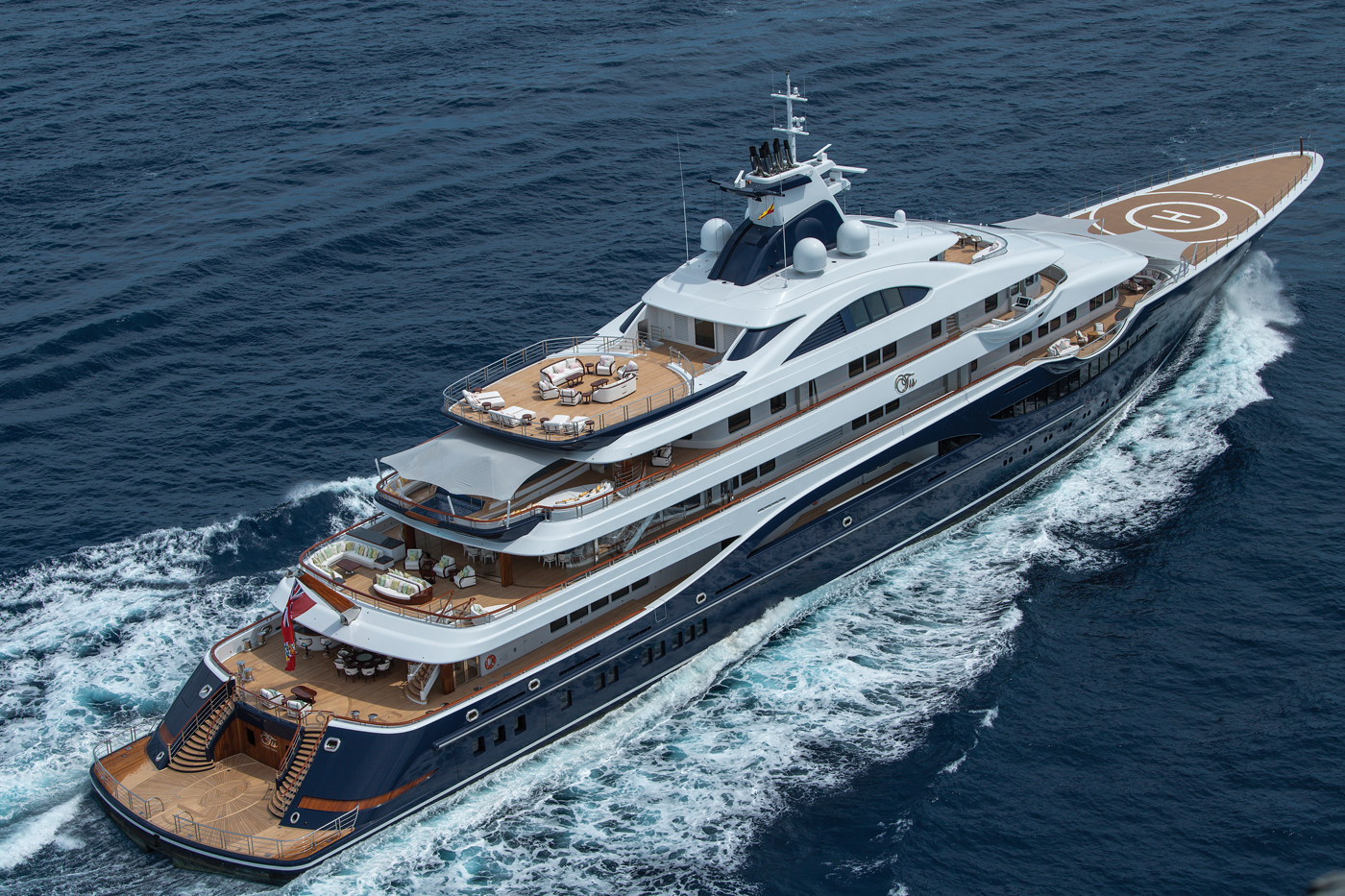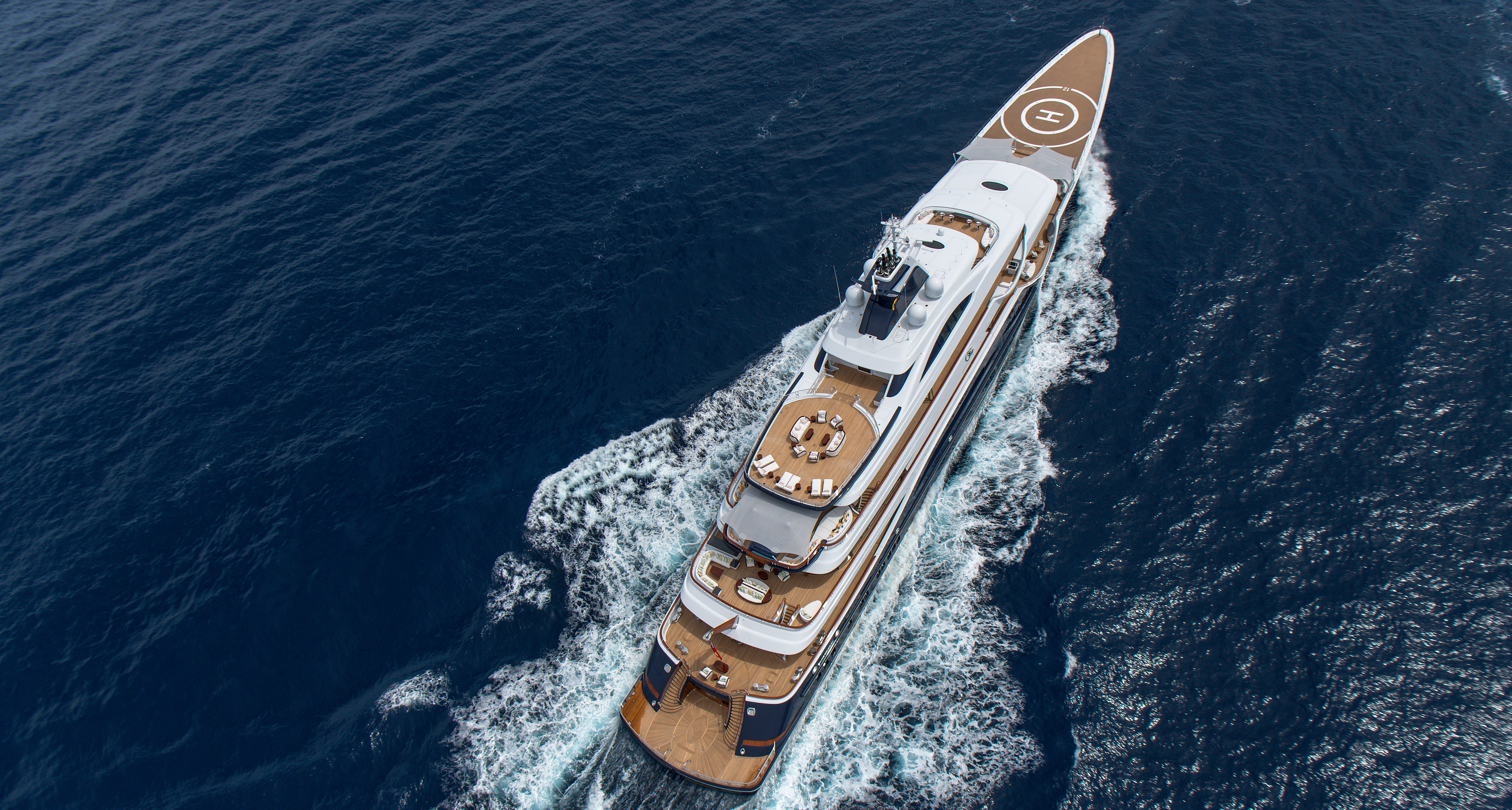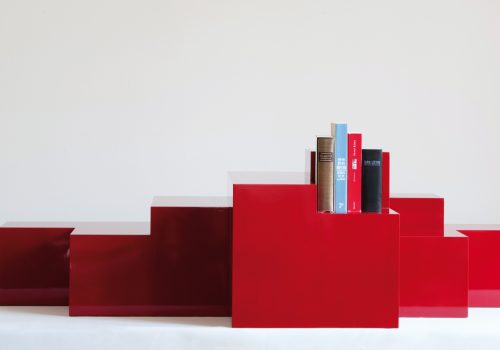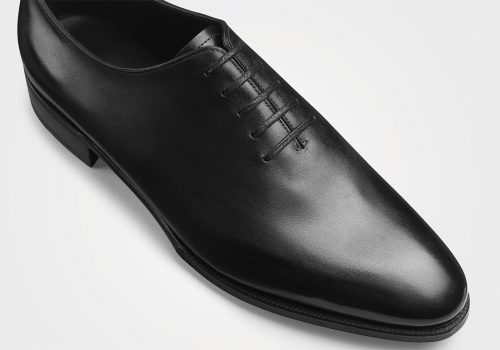Conceived to be a seafaring family home (read palace) on which the owner could spend nine months a year with ‘just’ close family and 38 crew, every inch of the 111-metre Lürssen-built Tis has been painstakingly crafted to fulfil his mandate for a boat that is light, fresh and open, but with a classical twist.
“Tis is a work of art,” says Andrew Winch, the yacht’s designer. “It’s a unique yacht, centred around the lifestyle of the family. The brief was that they feel at home – so what does home feel like? To them, it feels like a castello in Florence, a grand chateaux in the middle of Paris, a mansion in Mayfair. And if you put that into hotels, it is Claridge’s in London, Le Bristol in Paris, the Four Seasons in Florence, and the Hotel du Cap-Eden-Roc in the South of France.”
Built to PYC class (for yachts that accommodate between 12 and 36 guests), Tis had to adhere to many strict rules on safety, especially in terms of embarkation of passengers the escape routes being free from any flammable materials (meaning nearly all plaster and cornicing work is in fact made from milled aluminium). Lürssen is well acquainted with PYC requirements however, as is Winch Design, who created both the exterior styling and the interior design of the 4,699GT yacht. With a beam of 16.85 metres she boasts vast interior volumes that are paradoxically spacious yet intimate. Required to also perform as a full business centre, a flexible dining room with a table that seats sixteen doubles up as a fully functioning conference room, with power, WiFi sockets and video conferencing conduits artfully concealed by way of marquetry inserts.
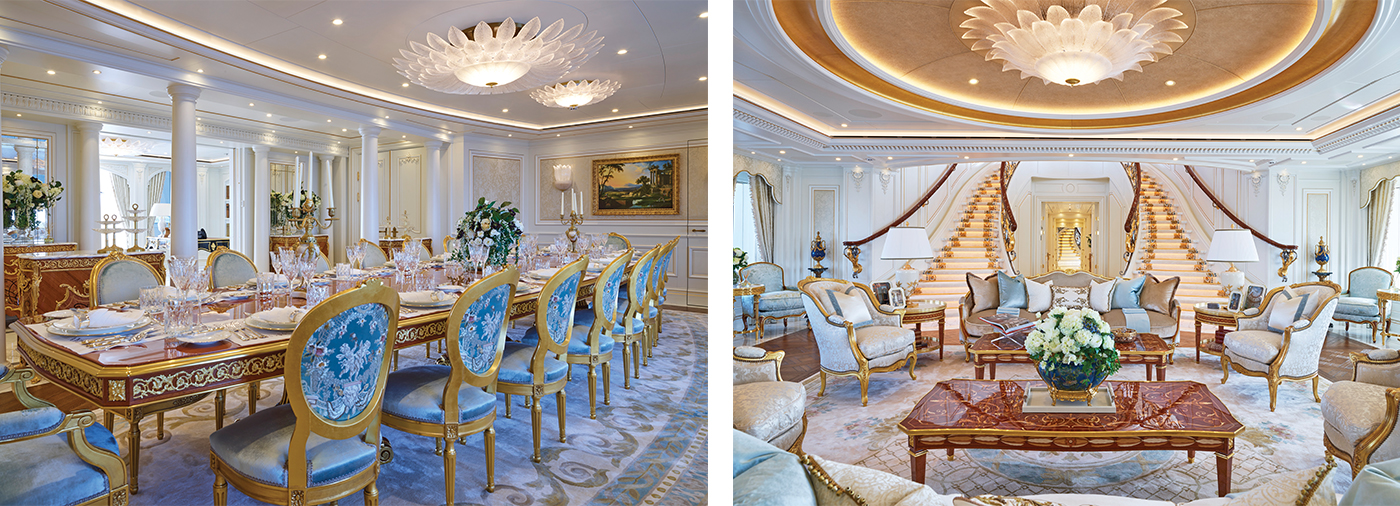
RIGHT: The substantial beam allows for a voluminous interior and includes among other key features a sweeping, gilded, wrought iron staircases at the transom. LEFT: The main deck’s dining room can seat up to 20 and can convert into a board room, with hidden plugs in the table and a large painting that disappears to reveal a TV.
Calacatta Vogli marble is used throughout, while the walls and ceilings have been given a cream hand-dragged paint effect with 23.8 karat gold ceiling profiles. “This is not a nouveau riche yacht, it is a sophisticated, gentle classic yacht,” says Winch. “There is no shiny gold on this entire boat. Every piece of gold is antique – a muted, softened, old gold.” There are in fact 25 different gold finishes featured on board.
Amidship on the main deck is a grand, formal entrance lobby. A sweeping marble staircase with ornately carved brushed steel – expertly matched to that from Le Bristol in Paris – sets the design tone. Suspended above the lobby are the hanging balconies of the upper decks allowing for a quadruple-height ceiling. A lift shell also inspired by Le Bristol (with all mechanical moving parts hidden) provides accessibility to all decks.
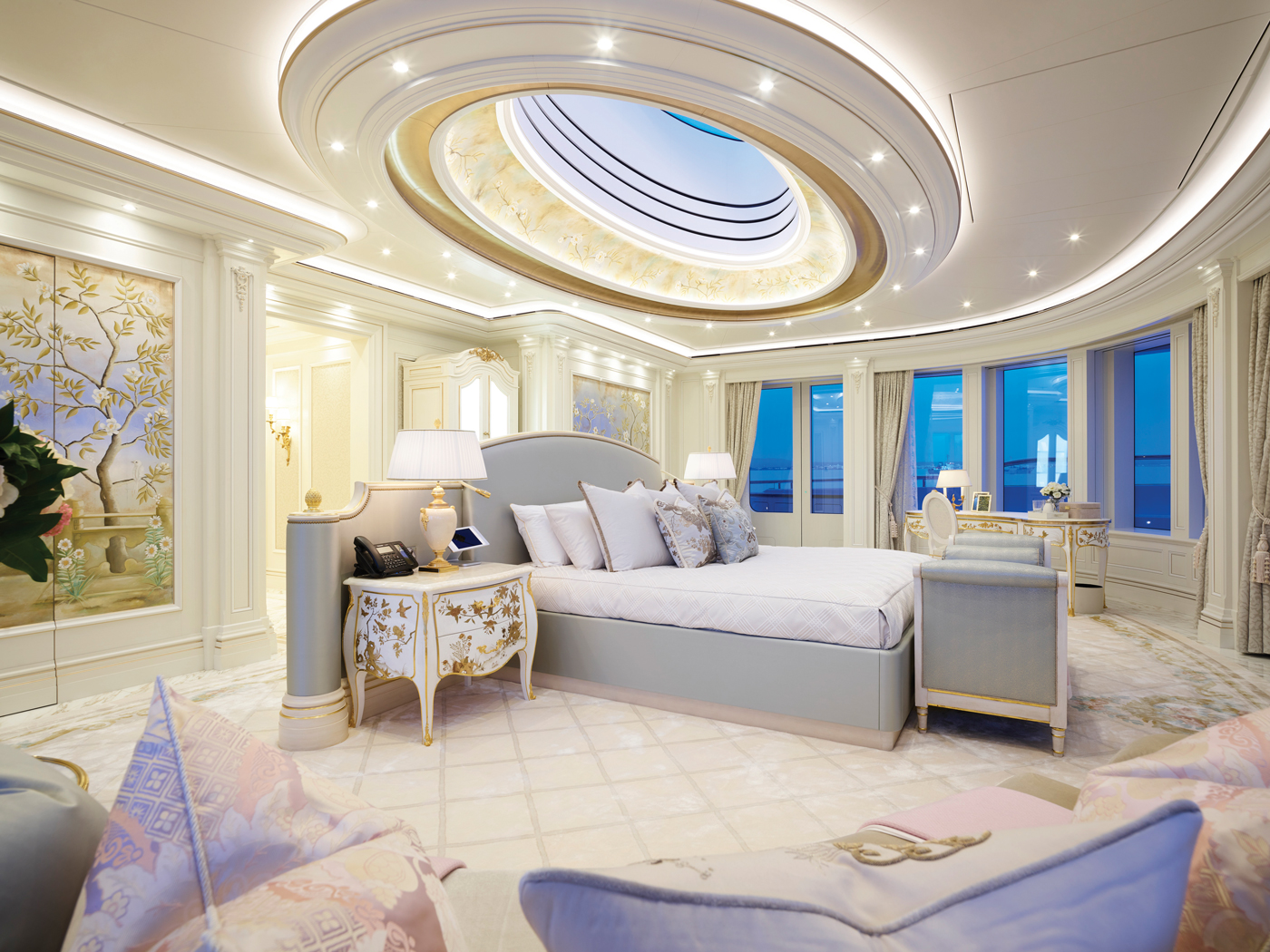
The owner’s suite has three-metre high ceilings, a sky light, two balconies and a large covered forward terrace.
Warm creams, dark oak Palais de Versailles-style parquet and rich blue tones in the salon are complemented by traditional carved furniture in the classic Louis XIV to Louis XVIII style. A large winter garden-style aft deck, with sliding glass doors and heating, keeps the elements at bay. Having never previously owned a yacht but chartered plenty, the owner required the lower deck beach club to be a waterside area that offers seclusion and privacy. More akin to a sports bar than a beach club, it possesses three TVs on which to watch live sports, a sauna (with views out to sea), an ice fountain, loungers, and underfloor heating. The transom is designed to be the “front door”, says Winch – the “portico to the chateaux”.
A second guest spa located on the bridge deck – the Lemon Grove – is a dedicated relaxation room with carved stone lemon trees climbing the walls. Equipped with a Hammam, hair salon, massage room with Capri-themed painted walls, a steam room, juice bar, and an 8-metre swimming pool with contra flow jets, it is entirely independent of the beauty room and massage parlour located in the master suite, intended purely for the owner’s wife.
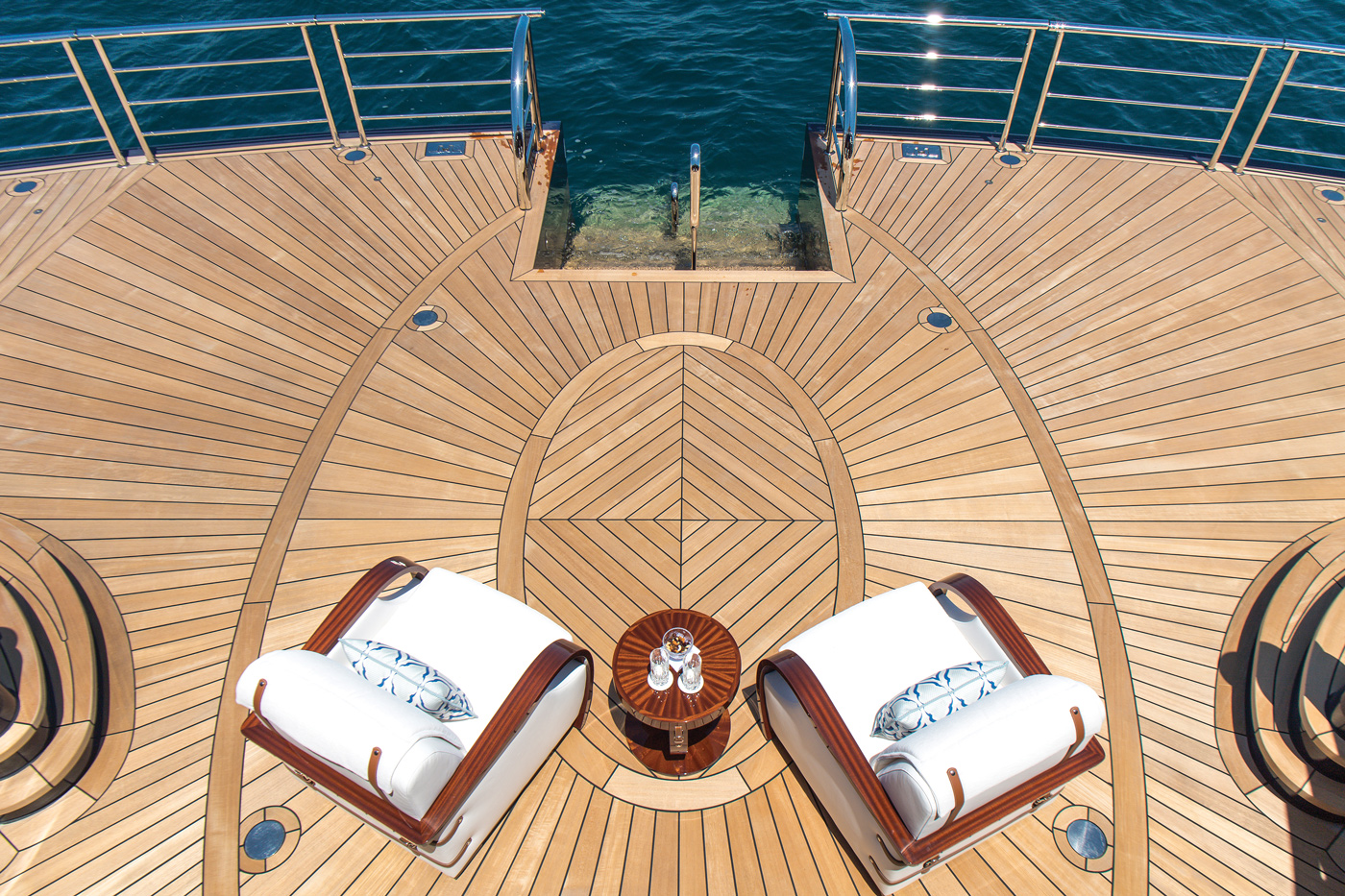
A serene haven away from the world, a private terrace wraps around the exterior of the full-beam master suite, while from the inside the owner enjoys his-and-hers bathrooms, dressing rooms and 180-degree views over the bow. Decorated in a calm palette of warm creams, sage greens and precious metals, the owner’s suite includes a large skylight above the bed for star-gazing, while a private terrace features two exterior nooks with tables and built-in upholstered sofas.
“There are changes in the deck levels to keep the exterior lines but also to facilitate higher ceilings in different areas of the yacht,” explains Winch. “The master suite is higher than we’ve ever managed to do before, but it gives an added elegance and value to the space, because it feels so generous of height. The integration between exterior and interior is harmonic.”
A full outdoor cinema, nightclub, and entertainment space occupies the sundeck, which doubles up as a teak-covered helideck. One of two helidecks on board (the second on the bow), it is primarily intended for refuelling, and supports TIS as a full ice-strengthened explorer yacht, with two customised 11.5m Wajer tenders in both limo and open versions. A top speed of 18 knots and a range of 7,000 nautical miles cruising at 12 knots is powered by two 3,200 kW engines, which can be viewed from the glass-panelled corridor.
Fitted for Tier III conversion with a heat recovery system, the exhaust system is equipped with HUG particle filters and soot burners providing excellent fuel-efficiency and lower emissions. A masterclass in balancing technological prowess with decadent design, the pièce de résistance is the Ladurée tearoom located on the uppermost deck, facing forward. Designed to indulge the owner’s wife’s love of macaroons from Paris’ most famous patisserie, the pastel-green space is about an “experience” and a “lifestyle” says Winch: “It’s a place to go and take tea in the afternoon. It can cater for up to eight people, but more than that, it’s a privacy zone.”
